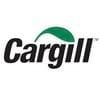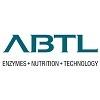Check out what is new in Poultry Industry
Find the best technical articles, forums, and videos on Poultry Industry at Engormix. Enter now and interact with the world's largest agricultural social network.

Dr Pooja Bhardwaj, General Manager at Lavizen Health Care, highlights how lower temperatures and shorter daylight hours in winter reduce egg production and quality in layer birds, making artificial lighting essential to maintain hormonal balance. ...
Comments : 0
Recommendations: 0

Dr. Anup Kalra, Strategic Advisor to Saife Vetmed, shares insights from over 30 years of experience across dairy, livestock, poultry, and pet health. He discusses key challenges facing the poultry industry, with a strong focus on antimicrobial resistance (AMR), biosecurity, and the responsible use of antibiotics. The session also highlights sustainability as both a social and financial imperative, emphasizing farmer profitability, food safety, and the role of industry collaboration in...
Comments : 0
Recommendations: 0

Dr Jeetendra Verma, President of WVPA India, highlights the evolution of Poultry Knowledge Day into one of India’s most influential scientific and industry-driven events. ...
Comments : 0
Recommendations: 1
The poultry industry continues to invest heavily in research to deepen its knowledge of avian health and management, while identifying new strategies to strengthen overall industry performance. These innovations and related topics will be showcased at the International Poultry Scientific...
Comments : 0
Recommendations: 0
Featured users in Poultry Industry

Shivaram Rao
Pilgrim´s
PhD Director Principal de Nutrición y Servicios Técnicos de Pilgrim’s Pride Corporation
United States
United States
Within the digestive system, the liver is the primary organ for nutrient transformation and distribution, as well as the elimination and excretion of metabolites. The quality of nutrition has a direct impact on liver health, as the liver performs vital functions. A balanced diet supports liver function and prevents diseases. In contrast, imbalanced or contaminated diets can damage the liver, increasing the risk of diseases. ...
Comments : 0
Recommendations: 0

At Poultry India 2025, Lukas Bauer (Evonik Animal Nutrition) explains how a solution enhances gut health for optimal poultry performance. The solution supports producers facing modern production challenges with consistent and reliable results. ...
Comments : 0
Recommendations: 1
Featured comment:

With the evolution of more sophisticated poultry houses, the understanding of the fundamentals of environmental control is mandatory. I congratulate Ricardo for all his contributions, bringing updated information in this area of poultry production. ...
Comments : 2
Recommendations: 2
Featured comment:
@Dr Kotaiah Talapaneni, A just hatched bird does not need to eat because it already has its own yolk sack. But the broiler has inherited a survival gene that makes its brain spark for FOOD.
They will eat mash, pelleted, whole, etc., to fulfill the 8 enunciated points. Until then, they will rest, but in an instant, they will have grown and need more feed. ...
Comments : 26
Recommendations: 11


Changing Feed Industry Imperatives Call For A Closer Look At On-Site Aflatoxin Test Methods
Suggested link

In this Engormix interview, Nath Morris, President of U.S. Poultry & Egg Association, shares his expectations for IPPE 2026. ...
Comments : 0
Recommendations: 1

Julian Madeley, Director General at the World Egg Organisation, shares why eggs remain one of the most powerful nutritional foods worldwide and highlights the projected 21% global growth in consumption over the next decade. Speaking from Poultry India in Hyderabad, he explains why India—already the world’s second-largest and fastest-growing egg market—is set to drive a quarter of this global expansion. ...
Comments : 0
Recommendations: 0

Julian Madeley, Director General at the World Egg Organisation, speaks about the upcoming WEO Business Conference on 19–21 April 2026 in the vibrant city of Warsaw, Poland. Known for its modern energy and rich history, Warsaw provides an ideal setting for industry leaders to connect, exchange ideas and engage with WEO’s forward-looking programme designed to shape the future of the global egg sector. ...
Comments : 0
Recommendations: 1
Once again, Hangzhou De Mark is showcasing its comprehensive range of feed ingredients and additives at the International Production & Processing Expo (IPPE) – the premier event for the feed production and processing industry.
From veterinary APIs to feed additives for animal healthcare and nutrition, discover what...
Comments : 0
Recommendations: 0

Ricardo R. Guerra, Ventilation Expert at Cargill, points out the main points of his conference about Environmental Control (EC ) in Poultry India 2025 ...
Comments : 2
Recommendations: 2

Dr. PrakashBabu Manilla, Chief Geneticist at Venkateswara Hatcheries, explains how the company supplies over 75% of India’s commercial layer chicks—meaning seven out of every ten eggs come from their genetics. He highlights strong growth in the egg sector, driven by rising demand for affordable protein across the country. With solid domestic expansion and increasing export potential, the future of India’s layer industry looks highly promising. ...
Comments : 0
Recommendations: 0

Dr. Vishwas Sagajkar, DGM Marketing at Venkys India, outlines how shifting weather patterns are driving higher fungal contamination and a surge of multiple mycotoxins in Indian feed ingredients. He highlights the dominance of fumonisin in corn and DDGS, alongside other recurring toxins such as aflatoxin, ochratoxin, citrinin, and T2. ...
Comments : 0
Recommendations: 1

Fran Alonso, Global Commercial Director at Liptosa, outlines the company’s 25+ years developing phytogenics, organic acids, mycotoxin binders, and specialty additives. He highlights how modern genetics and market complexity demand more efficient nutrition and innovative solutions. *Certain information associated with products, their composition and claims may be different depending on the geographical region and may not be applicable in all countries. Liptosa reserves the right...
Comments : 0
Recommendations: 0


Bacillus Amyloliquefaciens Improves Performance and Gut Integrity in Broilers Fed Low Protein Diets under Necrotic Enteritis Challenge
Suggested link

Deepak Khosla from the Venkys Group highlights steady growth in India’s poultry sector alongside rising challenges: mycotoxins, biosecurity gaps, and weakened immune responses. He stresses strict vaccination programs, strong biosecurity after global avian influenza events, and better water and shed management. With climate-driven grain contamination increasing, producers must adopt precise solutions to protect flock performance. ...
Comments : 0
Recommendations: 1

Josep García Sirera, Toxin Solutions Manager at Agrimprove/ Special Nutrients explains how Bio-Bantox Plus combines two bentonites—one natural and one processed—to capture the full range of mycotoxins. The dual polarity approach binds both hydrophilic toxins like aflatoxin and lipophilic toxins such as DON or zearalenone. Its lipophilic component also neutralizes pesticides, chemical residues, and endotoxins, making it a complete toxin-binding...
Comments : 0
Recommendations: 1

Andrew Vignati from VICAM speaks about the benefits of using this technology for mycotoxin detection in the feed ...
Comments : 0
Recommendations: 0



















.jpg&w=3840&q=75)




















